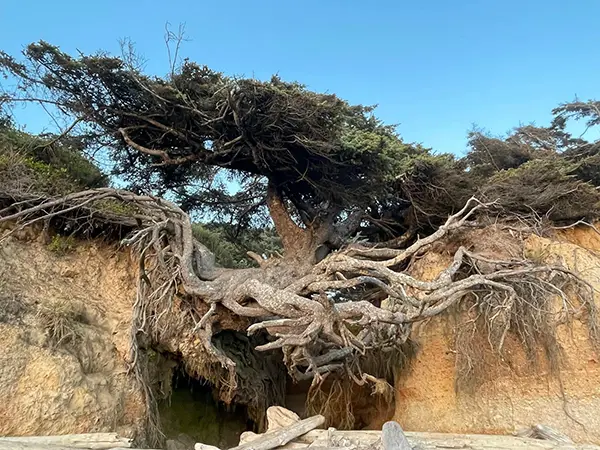
The Kabbalah is an ancient form of Jewish mysticism concerned with understanding the secret meaning of the universe. It teaches about several concepts of god’s nature, life, and soul.
A visual aid often used by Kabbalists to explain the nature of the universe is the Tree of Life. Kabbalists believe that “The Tree of Life is the blueprint of creation, revealing the divine structure that underlies all existence.”
The Tree of Life is considered the blueprint for spiritual enlightenment. It is widely believed that the branches of the tree reach up into the heavens while its roots keep us grounded in the physical realm, illustrating the balance of life and the unity between spirit and matter.
There are several schools and educational institutions of thought and disciplines within Kabbalistic practice, that might interest the people inclining towards the Jewish mysticism.
This post will further explore the Tree of Life and its symbolism, so read on to find out more.

Studying the Kabbalah
Before getting into more detail about the Tree of Life, it’s first important to recommend a formal Kabbalistic study. The Kabbalah is an extensive subject, with a lineage of scholars going back over a thousand years.
Kabbalah majorly focuses on human interaction with the study of creation and the divine world. It is built upon the teachings handed down through generations of Sinai.
As alluded to in the introduction to this post, there are different schools of thought and disciplines within the wider Kabbalistic practice, like Bnei Baruch, for example.
To find a suitable place to study, you first need to look for and research different schools of Kabbalistic study and find one that is right for you. Choose a reputed and established college within that discipline to ensure that you benefit from your time there.
The Tree of Life
The Tree of Life is an archetype found in several philosophies, and religions, signifying a variety of meanings in different mythologies.
In Kabbalistic Judaism, it represents the universe’s divine structure and can even be used as a method to achieve the Jewish concept of enlightenment, which is essentially knowledge of God’s divine nature.
The Tree of Life is composed of ten spheres, which are called the Sephiroth. These ten spheres give way to 22 paths, which provide a framework for true enlightenment and abandonment of worldly pleasures.
Each Sephirah represents a unique aspect of the divine emanations, which are essentially fragments of God. In simpler terms, if God was the sun, then divine emanations would be scattered rays.
DO YOU KNOW?
- The ten sefirot in the Tree of Life represent different attributes of God and aspects of creation. The three columns of this sefirot are often referred to as the Pillars of Severity, Mercy, and Balance.
- This arrangement not only symbolizes the flow of divine energy but also illustrates how these attributes interact to create harmony in the universe.

Personal Growth
A fundamental part of the Kabbalistic experience is personal growth. It talks about various concepts such as the four souls, the ten sephirot, and the idea of vacated spaces that elucidate the importance of decluttering the mind,
It is believed that true enlightenment cannot be achieved until a person has experienced something similar to what Buddhists call ego death.
However, it is important to note that the enlightenment referred to in Kabbalistic practice differs somewhat from the one sought by Buddhists. Beyond the pursuit of their own forms of enlightenment, however, there are few similarities between Buddhism and Kabbalistic Judaism.
Most Kabbalists believe that by pursuing practice, they can liberate sparks of divine light, which they believe were trapped in our reality during the universe’s inception.
DO YOU KNOW?
The Tree of Life has a male side, which is the right side and signifies crown, wisdom, Kindness, beauty, and, eternity. The female side or the left side signifies Understanding, severity, kinship, and foundation.
Why Is Studying Important?
You can read about kabbalah from various books or learn from other sources online, but it is always advised to get in touch with a college or an educational institution devoted to the study of kabbalah.
You might be asking yourself why joining an institution is considered better and is preferred by most people, or why you can’t study by yourself at home.
The answer is quite clear, the esoteric nature of the Kabbalah. For over a thousand years, Teachings were passed to the students from their masters. Books written by academics and non-practicing kabbalists are not sufficient to learn and understand the teachings of Kabbalah.
Due to its complex nature, only a teacher with traditional knowledge of the Torah can provide you guidance and support to truly immerse yourself in Kabbalah and have a greater understanding of the Torah,
If you want to learn more about Kabbalah, now’s the time to start reaching out to established colleges and educational institutions.
Hopefully, after reading this post, you understand the significance of a master in learning Jewish mysticism. Use the guidance given above to find a suitable teacher to begin your learning journey with.